FW
Global environmental organisation Greenpeace has recognised SBA Group company Utenos trikotažas as the first and so far the only company in the world to work entirely according to its textiles procurement standard. Greenpeace has already started to produce its own t-shirts at the Lithuanian company.
Utenos trikotažas has already finished the first batch of Greenpeace's new collection and will continue the production later this year. The company and its partners have shown that for the first time ever, steps to avoid hazardous chemical use and contamination have been taken across the entire production chain, from fibers in the processing of raw materials, to dyeing and printing according to Detox principles, and finally to the sewing and packaging of high-quality garments, made to last.
The new Greenpeace standard is an example of best practice for any company implementing an ambitious plan to detox.
The Coronavirus shutdown will affect the Indian textile and apparel industry especially in Tirupur. The garment sector in Tirupur is heavily dependent on China for sourcing accessories. The present stock position could last till March. The total shutdown in China has disrupted the supply chain. The sector may hurt its margins if accessories are sourced from a trader in India or from an overseas market other than China. Accessories bought by Indian manufacturers from China are stuck as no deliveries have taken place after the Chinese new year since all units in that country remain shut.
For one, a decline in China’s imports of cotton yarn is possible, thus impacting the cotton yarn export business of India. This will divert India’s surplus cotton yarn to the domestic market, further reducing the price of cotton yarn. If China continues to battle with the coronavirus, Indian garment manufacturers will need to look at other alternatives, including local sourcing, which in turn may increase the cost of finished goods by three per cent to five per cent. In addition to this, identifying vendors in such a short time can take a toll on lead times, quality and cost. On an average, India exports 25 million kg of cotton yarn a month to China.
Discover e-Solutions Ltd. (DeSL) is a leading provider of end-to-end software solutions for the fashion, apparel, textile, and footwear sectors.
Announcing DeSL’s Creative Sales Platform developed as the digital infrastructure to connect customers and global sales teams in real-time, ultimately shortening the overall order processing cycle and reducing the need for physical samples. Creative Sales Platform is part of the Made for You series of specialized, standalone,or fully integrated modules.
Teams around the globe can collaborate on collections using the online platform regardless of their physical location. Full drag and drop functionality is available to create collections for specific customers, by region, or sales channel. The platform is an online replacement for hard copy collections, line books, and catalogs. Gain exposure to all required key digital assets, including 3D product models and core sales images. Compile financial data for planning and analysis, while viewing sales forecasts and actuals. Benefit from flexible price and discount editing with multi-currency settings. Workflow is based on integration to an existing ERP solution, DeSL ERP or other.
Creative Sales Platform organizes product sales and marketing messages in one central hub. View real-time customer ratings and feedback, while easily identifying the “winners” and “losers” in a collection. Robust sales analytics offer data for making more informed selling decisions. Brands can view online order confirmations and estimated delivery windows to communicate back to customers. Creative Sales Platform can be used in conjunction with DeSL’s other modules to deliver the ability for purchase order creation to satisfy the demand of customer sales orders.
Creative Sales Platform joins DeSL’s other Made for You series of modules covering all key business processes starting at product concept and reaching through to final sale and delivery.
 Jersey manufacturer Tintex has established itself as a global leader in smart innovation. The commitment to support brands in creating responsible collections is interwoven with its motto `Naturally Advanced’. At Première Vision the company presented its S/S 2021 collection and a new strategic approach to make the world a better place, a garment at a time. “That’s why we decided to update our statement-motto in Naturally Advanced Evolution: a promise and an invitation to work together to develop further collections combining an environment-driven approach with cutting-edge technology. Textile producers and fashion brands should develop their partnership in a much more collaborative way,” said Ricardo Silva, Head of Operations of Tintex.
Jersey manufacturer Tintex has established itself as a global leader in smart innovation. The commitment to support brands in creating responsible collections is interwoven with its motto `Naturally Advanced’. At Première Vision the company presented its S/S 2021 collection and a new strategic approach to make the world a better place, a garment at a time. “That’s why we decided to update our statement-motto in Naturally Advanced Evolution: a promise and an invitation to work together to develop further collections combining an environment-driven approach with cutting-edge technology. Textile producers and fashion brands should develop their partnership in a much more collaborative way,” said Ricardo Silva, Head of Operations of Tintex.
In a move towards its partners, the company has reorganised its products collection into distinct categories and further evolved its production process in order to guarantee the highest quality and performance of its fabrics and, at the same time, to become more competitive and to allow its clients to orientate better and easily find the most suitable and practical solution.
Tintex presents new collaborations with the premium brands Hanro, J.Lindeberg and Outlier for sustainable smart innovation. The collaborations born from this vision involve:
sustainable smart innovation. The collaborations born from this vision involve:
• Hanro, with the “Balance Shirt” is made of 100% Tencel fabric by Tintex enriched by the premium Naturally Clean finishing and thereby the basic shirt for everyday wear – it’s high-quality, functional and has a relaxed, comfortable fit. The understated “Balance Shirt” by Hanro puts the focus on the basic, quality lyocell fabric, which ensures a soft drape and a subtle sheen.
• J.Lindeberg offers versatile products designed for an active life always finding new ways of doing things; new materials, new design and new technologies. Focus is on details, fit and execution. The brand selects smart cotton knits by Tintex in pure versions or in blend with Tencel or recycled polyester.
• OUTLIER makes hardcore, performance-driven clothing that empowers the wearer to do more while owning less. The brand selected 100% smart cotton options by Tintex to develop an experimental, box cut, heavyweight t-shirt unlike any other. At 8oz it’s very heavy for a tee, but thick cotton yarns knit at a low-gauge give the fabric a stand-off-the-body structure and hidden openness for wide ranging comfort. The t-shirt is enriched by a GOTS certified 100% Organic cotton rib for the neck.
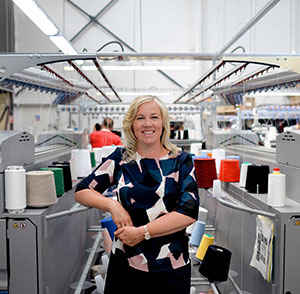 50% of UK fashion and textiles manufacturers are reporting an increase in new business enquiries linked to the ongoing impact of coronavirus, according to a survey carried out by Make it British.
50% of UK fashion and textiles manufacturers are reporting an increase in new business enquiries linked to the ongoing impact of coronavirus, according to a survey carried out by Make it British.
Kate Hills, CEO of Make it British, explains: “Coronavirus is causing chaos for big retailers and their supply chains as many factories in China remain largely closed, where a large proportion of the world’s fashion brands are made. A lot of retailers are worried they’ll have no stock in their stores soon because so much comes from the Far East now, particularly in textiles. They’re urgently looking at how they can plug gaps for products that are due on shelves in as little as eight weeks. And that’s where UK manufacturers can offer a solution!”
Amongst the products that are being ordered are high summer stock, such as dresses and swimwear, as well as the raw materials to make winter stock, such as wool yarn and cloth. Sewing factories are also being asked to make face masks.
Whilst the increase in enquires for these manufacturers is good news, many are cautious of taking on lots of new customers. They fear that the work will be taken away from them again, once the Chinese factories reopen. They have had their fingers burnt in the past by retailers looking for a quick fix to supply chain issues and turning to UK manufacturers for a solution, often expecting to be given the same cost prices as they were paying the Chinese factories.
Whilst the current influx of enquiries might be just a flash in the pan, one thing the coronavirus outbreak has shown the industry is how fragile global supply chains are when something like this happens. 35% of the UK manufacturers surveyed said their own supply chains had been disrupted because many of their raw materials come from China or Italy.
Alkesh Kapadia of Barcode Design says: "A lot of UK manufacturers are relying on imported fabrics. The impact is growing and the prices of the raw materials has gone up by 4% already. The UK fabric manufacturers will get busy but they will have to source yarns from different countries and that may affect the prices too.”
Brands that manufacture locally and source their raw materials from the UK are in a much better position. When the whole supply chain is local, and is not reliant on crossing borders, it is much less vulnerable when something like this happens. This is a sentiment echoed by Steff McGraph of Something Wicked: “We’re relieved that we manufacture in the UK and use UK suppliers wherever possible. I would be extremely worried if I outsourced to China.”
Jenny Holloway runs Fashion Enter, a social enterprise garment factory in London, and describes coronavirus as a ‘dual-edge sword’: “There’s been a spike in sampling and we have opened two new accounts for bulk production almost immediately, but the downside has been yarn supplies. This in turn has created a further opportunity with retailers panic-buying stock fabrics, which is then coming to the UK manufacturers. Many knitters had bulk yarns in reserves. However, these stocks are going to run out...so what then? Surely this all points to a new type of collaboration between retailers and manufacturers and not before time. We are already aware of one retailer giving shares to their supply base binding them together. It’s a start, but there’s a long way to go yet.”
China has been the dominant player in manufacturing for the last 20 years, but this worldwide disaster could be the turning point that UK manufacturers need to make people realise that sourcing closer to home is a better option. Some feel that Government should be doing more to help protect our UK manufacturing base. As Ihthshaam Sheikh from Ask Trading says: "Government should be providing funding to increase capacity so that we can show customers how great it is to manufacturer in the UK. This will in turn bring customers back, once they see the speed and quality."
Kate Hills concludes: “The spread of the coronavirus is happening fast, and there is no doubt more disruption is to come. But if there is one bitter sweet outcome to the tragic situation, it is that this might just be the wake-up call that the industry needs to relook at the wonderful manufacturers that we have closer to home.”
Lina Jasutiene, Recoupex presenting at recent Federation of Buying Agents (FBA) monthly meeting.
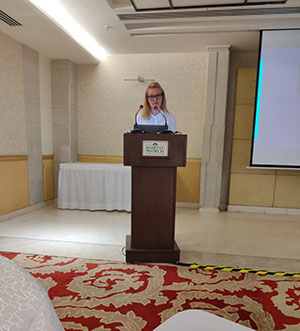 India’s textiles sector is one of the oldest industries in Indian economy. Textiles, textile goods semifinished and finished products have witnessed growth in demand recently. Despite the positive economic outlook for textile industry, many importers, exporters and freight forwarders face cargo damage in transit. In this article we discuss solutions on how to stop absorbing financial losses when cargo gets damaged in transit.
India’s textiles sector is one of the oldest industries in Indian economy. Textiles, textile goods semifinished and finished products have witnessed growth in demand recently. Despite the positive economic outlook for textile industry, many importers, exporters and freight forwarders face cargo damage in transit. In this article we discuss solutions on how to stop absorbing financial losses when cargo gets damaged in transit.
India based importers and exporters historically have been absorbing losses for cargo damage, even if they were not at fault for the damages. Freight forwarders also take part in the losses in order to keep customers due to very tight competition in the market. The trade volumes in and out of India increase, so is the frequency of cargo claims. Globally cargo claims have gotten really bad name in transportation industry and the reason for this is just because there are so many parties involved in international trade and oftentimes the blame for cargo damages is put on the weakest party in the transaction.
Typical damages in transit for textile and garment cargo are water ingress through holed, dented or rusty container. Textile goods and garments are sensitive to high humidity. After long exposure to humidity, different fabrics get damaged and often times become unsuitable for further use. Another cargo damage in transit is physical cargo damage due to mishandled container during loading, discharging operations. Cargo theft is also frequent in particular in certain port terminals. Cargo damages create friction between importers and exporters. International trade is growing, vessels are bigger, more transshipment ports get involved to transport container from origin to destination. This guarantees that witness cargo damages will not vanish.
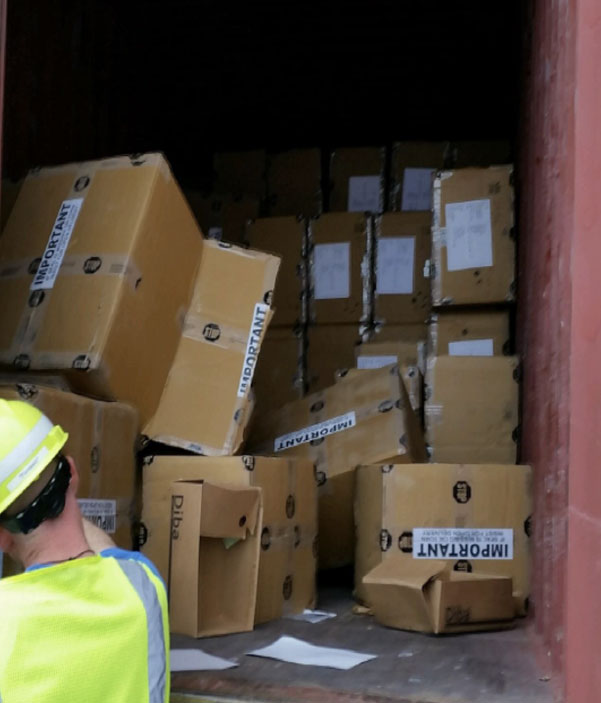
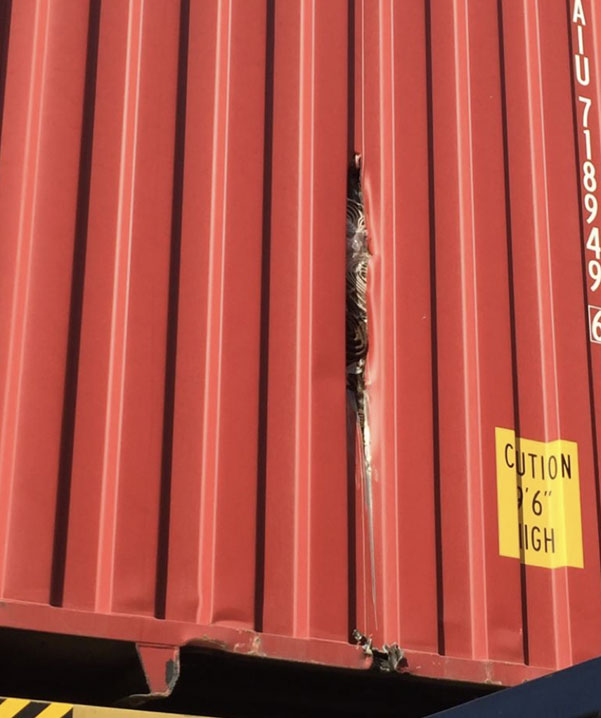
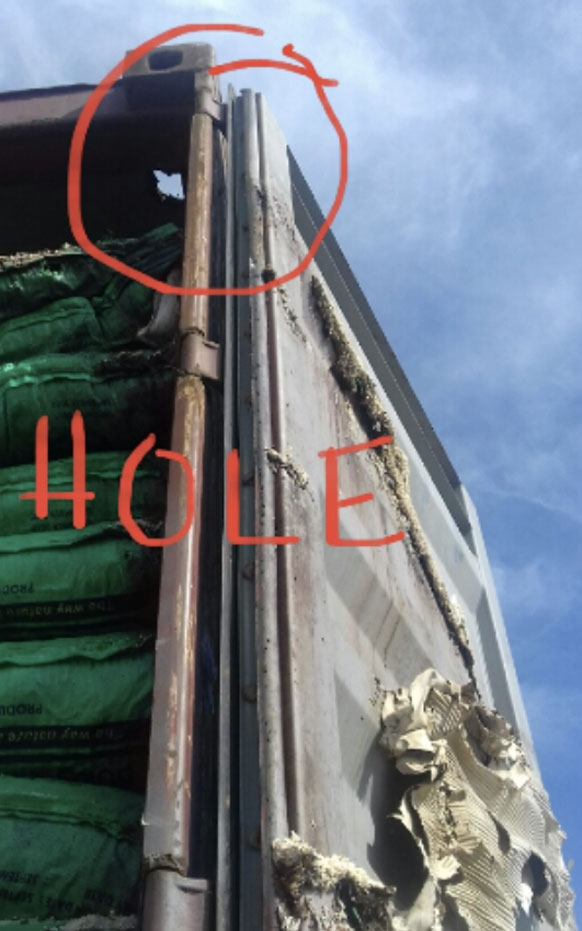
Recoupex, one-stop platform for cargo claim refunds, aims to create a frictionless cargo claim refund experience through technology, globally active network of lawyers and experts to substantially reduce the losses for freight forwarders and cargo owners when cargo is lost or damaged in transit. Dr. Lina Jasutiene, Managing Director of the company, expounds on the scenario on cargo claims in India.
It is very hard to get compensation from a liable party. There is a lot of uncertainty about rights and responsibilities in this process adds Jasutiene. Industry statistics show, that eight out of ten claims are rejected by the liable parties. Only one claim out of the ten gets paid at one tenth of the original value,” she explains.
Eighty five percent of all cargo claims are claims 50,000 USD. Due to high operational costs they become delinquent and dropped as uneconomic to pursue. All these losses are shared between exporters, importers and freight forwarders, states dr. Jasutiene.
Seeking for the compensation from the shipping line is a legal right importers and exporters have regardless if they are based in India and other countries. Recoupex helps shippers to obtain compensation they are entitled to at no win, no pay basis. Only if Recoupex is successful in getting compensation back they charge 20% service fee. Otherwise customers pay nothing. Global network of Recoupex highly specialized lawyers and technology enables higher value and faster settlements. Majority of Recoupex customers are importers and exporters who don’t have conventional insurance, or are undercovered. Some of our customers have insurance, however they prefer to obtain compensation through us as they don’t want their premiums to go up. Another group of customers wants to outsource legal support in claims handling. Either they don’t have capacity in house or it is not economically viable for them to have expertise in house,” adds dr. Jasutiene.
The future for the Indian textile industry looks promising, buoyed by both strong domestic consumption as well as export demand. With consumerism and disposable income on the rise, the retail sector has experienced a rapid growth in the past decade. To ensure sustainable profitability for importers and exporters remains of immense importance, while seeking compensation from the liable party as regard the damaged cargo in transit is one of the most untapped resource that needs to be explored.
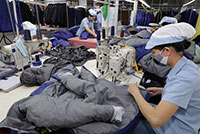 Increasing diversion of trade from Bangladesh to its close competitor Vietnam is causing the nation to lose sleep. As recent Export Promotion Bureau stats reveal, RMG exports from Bangladesh declined by 7.59 percent to $15.77 billion due to a decline in global demand. One reason for declining export is Bangladesh’s overdependence on only five items: men’s and women’s T-shirts, trousers, shirts, jackets and sweaters. Vietnam exports around 10 types of products to the US alone. The country also has free trade agreements with the European Union, the Asean, Hong Kong, Singapore, South Korea and China. It exports apparels to countries like the United States, Europe, Japan and South Korea. Of this, the US has traditionally been the biggest market for Vietnamese apparels and has benefitted the most from the US-China trade war.
Increasing diversion of trade from Bangladesh to its close competitor Vietnam is causing the nation to lose sleep. As recent Export Promotion Bureau stats reveal, RMG exports from Bangladesh declined by 7.59 percent to $15.77 billion due to a decline in global demand. One reason for declining export is Bangladesh’s overdependence on only five items: men’s and women’s T-shirts, trousers, shirts, jackets and sweaters. Vietnam exports around 10 types of products to the US alone. The country also has free trade agreements with the European Union, the Asean, Hong Kong, Singapore, South Korea and China. It exports apparels to countries like the United States, Europe, Japan and South Korea. Of this, the US has traditionally been the biggest market for Vietnamese apparels and has benefitted the most from the US-China trade war.
Shorter lead times enhances infrastructure ranking
Having 1,900 miles of coastline and 320 ports, Vietnam offers shorter lead times for apparel shipments compared to others. It was ranked 80th by the World Economic Forum in terms of quality of port infrastructure, with an average score of 3.80 on a scale of 1 to 7 between 2006 and 2018. Vietnam also offers shorter lead times for procuring skilled manpower and reaching its production capacities.
Cheap labor reduces production costs
The country has a low labor cost which reduces production costs compared to other competitive sourcing countries. However, Vietnam has increased its minimum wage by 5.7 per cent from January 2020. Wages will be based on the living expenses and regional distance from the workplace. In July 2019, Vietnam enacted a new competition law that limits unfair competition among Vietnamese and foreign companies in the domestic market. Though Bangladesh too launched such an act, it has not been effectively implemented.
Developing industries to curb import costs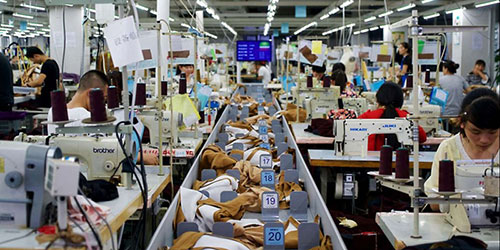
Another challenge that Vietnam faces is the high import cost of machinery and raw materials. To counter, this, Vietnam government is making heavy investments in the development of support industries. It has developed its cotton and knitting industry. Production of input materials lowers production costs besides opening doors to the competitive market. Also, Vietnam takes shorter time to import raw materials from China than other sourcing countries.
Currency devaluation adds advantage
The export-oriented country recently depreciated its currency Dong against the US dollar. Its better market access, zero tariffs on certain markets, shorter lead times, and competitive exchange rates, give it an advantage over other countries. On the other hand, Bangladesh does not plan to devalue its currency as the country’s economy mostly depends on import rather than export. This is causing it to lose competitiveness in the global market as it offers higher prices than other competitors.
Attracting foreign direct investments
With increased urbanisation, growing employment and income, Vietnamese people spend the second-highest on clothing after food. The domestic market attracts investments from the major international brands. The country, with skilled laborers and sophisticated techniques, is currently attracting many Chinese and Korean investors.
Comparatively, despite being the strongest source of economic growth for Bangladesh for three decades, the textile and apparel sector faces various challenges. Poor shipment facilities, higher production costs due to compliance, pegging of taka against US dollar, increased wage structure, false promise by buyers of giving fair prices, less diversified products, lack of diversified market and more importantly, unskilled workforce and the lack of mid-level management are some major roadblocks.
If Bangladesh wants to indeed compete with Vietnam, it needs to start producing high-end diversified products, look for diversified markets, train its workers to maximize efficiency, and start catering to small orders to get hold of the e-commerce platforms.
India became the largest producer of cotton in the year 2014-15 and continues to be the leader in cotton production in the world by accounting 37% area under cotton. India produces 330 to 400 lakh bales and consumes 300 to 320 lakh bales of cotton per year thus becoming a net exporter of cotton. Indian cotton has been the engine of growth for the predominantly cotton based Indian textile industry and currently textile exports account 80% of the textiles exports. The Technology Mission on Cotton and BT cotton technology helped the country to become the world leader in cotton textile exports. However, Indian cotton quality has been far below the standard especially in terms of trash content, contamination, etc., that stalled the value addition and also affected the revenue of the cotton farmers.
Cotton Corporation of India (CCI), established in the year 1974, started its Minimum Support Price operation during the year 1985 and is greatly helping the cotton farmers and the cotton textile industry that has been functioning under the Ministry of Textiles. The industry has been pleading the Ministry of Textiles to standardize and brand Indian cotton.
In a press release issued, Mr. Ashwin Chadran, Chairman, The Southern India Mills’ Association (SIMA) has stated that CCI started enforcing the fair average quality norms from the cotton season 2018-19 and was successful in its venture. He has stated that at a function held at Mumbai, the CCI has launched its first Indian brand “HIRA” and is planning to market the same shortly. Mr. Ashwin has appreciated the Hon’ble Union Minister of Textiles, Smt Smriti Zubin Irani and Chairman-cum-Managing Director of CCI, Dr P. Alli Rani for the historical initiative taken by CCI. He has stated that the Ministry is also planning to launch a scheme “Nirmal Cotton Mission” with CCI as a nodal agent that would go a long way to make Indian cotton to become the best quality cotton in the world and would enable the Indian cotton textiles & clothing manufacturers to produce all high value added items using home grown cotton.
SIMA Chairman has appealed to the Hon’ble Prime Minister to launch the Technology Mission on Cotton in a revised format to increase the productivity which is only around 460 to 500 kgs per hectare as against 1500 to 2200 kgs per hectare achieved by over 20 countries in the world. He has said that adopting global best practices and acquiring appropriate technology would be essential to achieve the mission of doubling the farmers’ income and make India as the true global clothier of cotton textiles.
US companies don’t take a chance on new fashion or new ideas. They are all hiding behind tried and true apparel such as denim. The main problem is the lack of passion that pervades the industry. Executives are afraid to be on the forefront of creating a new look.
Outrageous new ideas come from Paris, London, and Milan. But no one puts these ideas to work and creates a new boutique with interpretations of what is seen in foreign lands. The US delights in selling secondhand clothes, denim, and markdowns. That little black dress is gone, cargo pants are a thing of the past. Macy’s, JC Penney, Madewell and Gap sell secondhand clothes instead of introducing new fashions. The merchandise has been cleaned and scrubbed, but all the same shopping in these stores is about buying hand-me-downs. These sell and they add to profits but they do not create an image that a store can be proud of. However Nordstrom has taken a different approach. Nordstrom is stocked with merchandise that has been returned by its customers. Each item is cleaned, refurbished, and sold at about half its original price. That makes sense, since it does not introduce new brands that the store did not carry, and it does not confuse the fashion message Nordstrom is trying to create.
Hermes 2019 revenue rose 12.4 per cent. Recurring operating income was up 13 per cent. The company has been upgrading stores and opening new ones. Revenue generated in own stores rose 13 per cent last year. In Asia, excluding Japan, revenue rose 17.8 per cent. The firm saw strong growth in Greater China and in South Asian countries. The region benefited from sore revamps and openings as well as the continued development of its digital platform and it rolled this out in Singapore and Malaysia in October. Japanese sales rose 8.2 per cent. The Americas saw a 12 per cent revenue rise. Europe, excluding France, was slower but still grew eight per cent, driven by the United Kingdom and Italy. In November, Hermès opened its first store in Poland. Meanwhile, France posted an eight per cent growth.
In Q4 growth continued in all regions, with revenue rising 13.4 per cent in the quarter, although that figure and the 10.7 per cent constant currency rise did represent a slowdown.
France-based luxe brand Hermes, despite global economic, geopolitical and monetary uncertainties has an ambitious goal for revenue growth at constant exchange rates.












